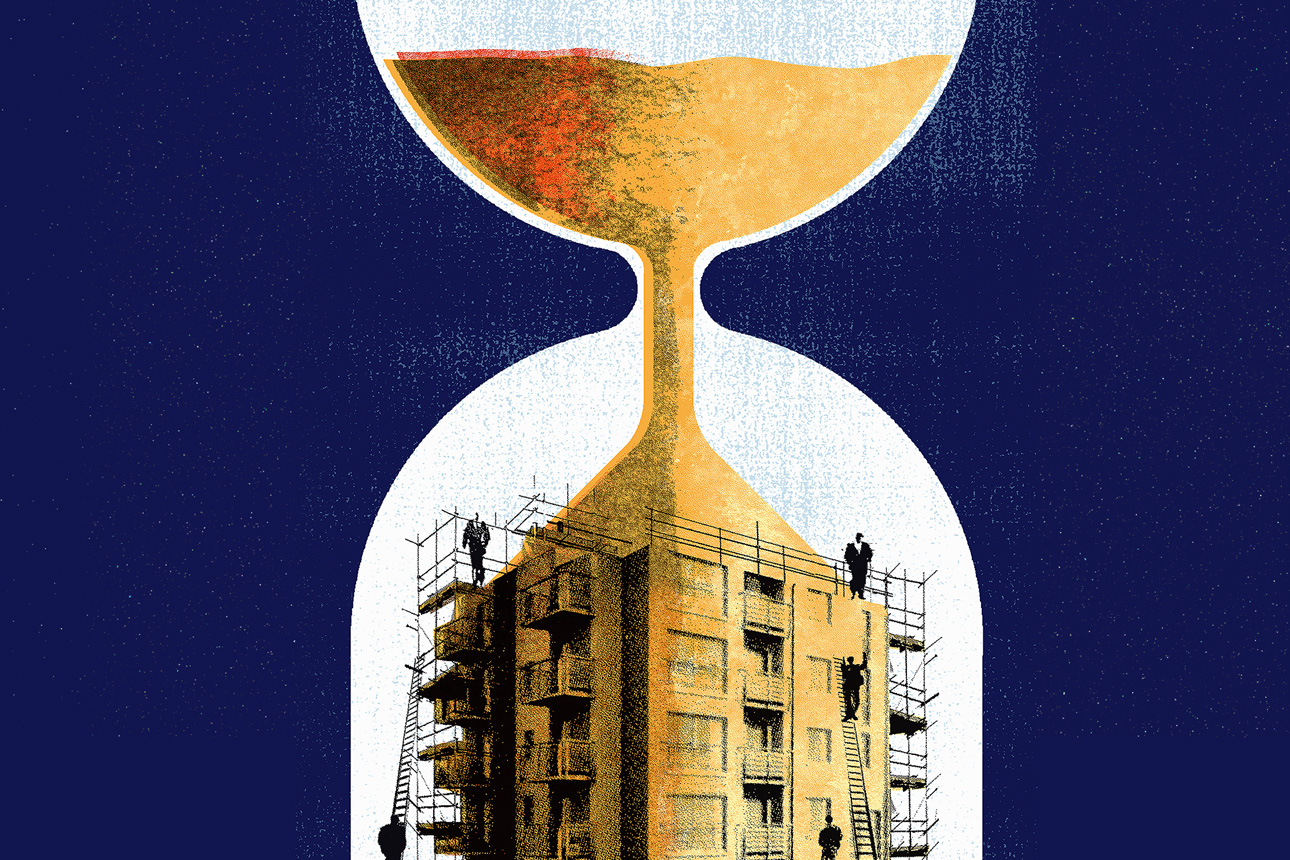A Better Way to Avoid Project Delays
Many organizations estimate project timelines inaccurately. Working from past project examples, however, can improve on-time completion.
Topics
Frontiers

Hardie/Ikon Images
Why do so many managers underestimate the time it will take to complete a significant project?
Almost half of business projects fall behind schedule, and up to a third are not completed at all, according to a 2021 report by the Project Management Institute. The Berlin Brandenburg Airport took 14 years to construct instead of the estimated five, and its cost ballooned from a 2009 budget of 2.83 billion euros to over 6 billion euros by the time it was completed. And after the V.C. Summer nuclear plant expansion project in South Carolina was abandoned in 2017, two executives involved in what became known as the “Nukegate” scandal pleaded guilty to fraud charges stemming from their efforts to conceal delays.
Late projects trigger cost overruns, reduce quality, and upset clients. While some projects fail due to poor execution or changes in scope, a frequent culprit is an unrealistic time frame that dooms the project before it even starts. Nonetheless, planners often set project schedules that are too short — partly because of uncertainty and ambiguity around the full scope of work required but also due to the expectations and enthusiasm of project sponsors.
Excitement about a new project can spur optimism, which may bias even experienced executives to underestimate the time needed to execute the work. However, if members of a project team consider a CEO’s optimistic estimated time to complete to be plausible, that is extremely likely to influence their judgment and be reflected in their own estimates. This is an example of anchoring, a cognitive bias that causes us to give more weight to the first piece of information we get on a given topic.
Unrealistic schedules may be introduced by a variety of unintentional anchors, including initial wild guesses (“Maybe we could get it done in two months?”), suggestions (“Can you complete the task in three weeks?”), customer expectations (“We’re planning to launch the product right after the new year”), and tentative deadlines (“The CEO asked for the project to be completed by the end of next month”).
Our own research confirms that anchors influence schedule estimates and that their effect persists over time.




